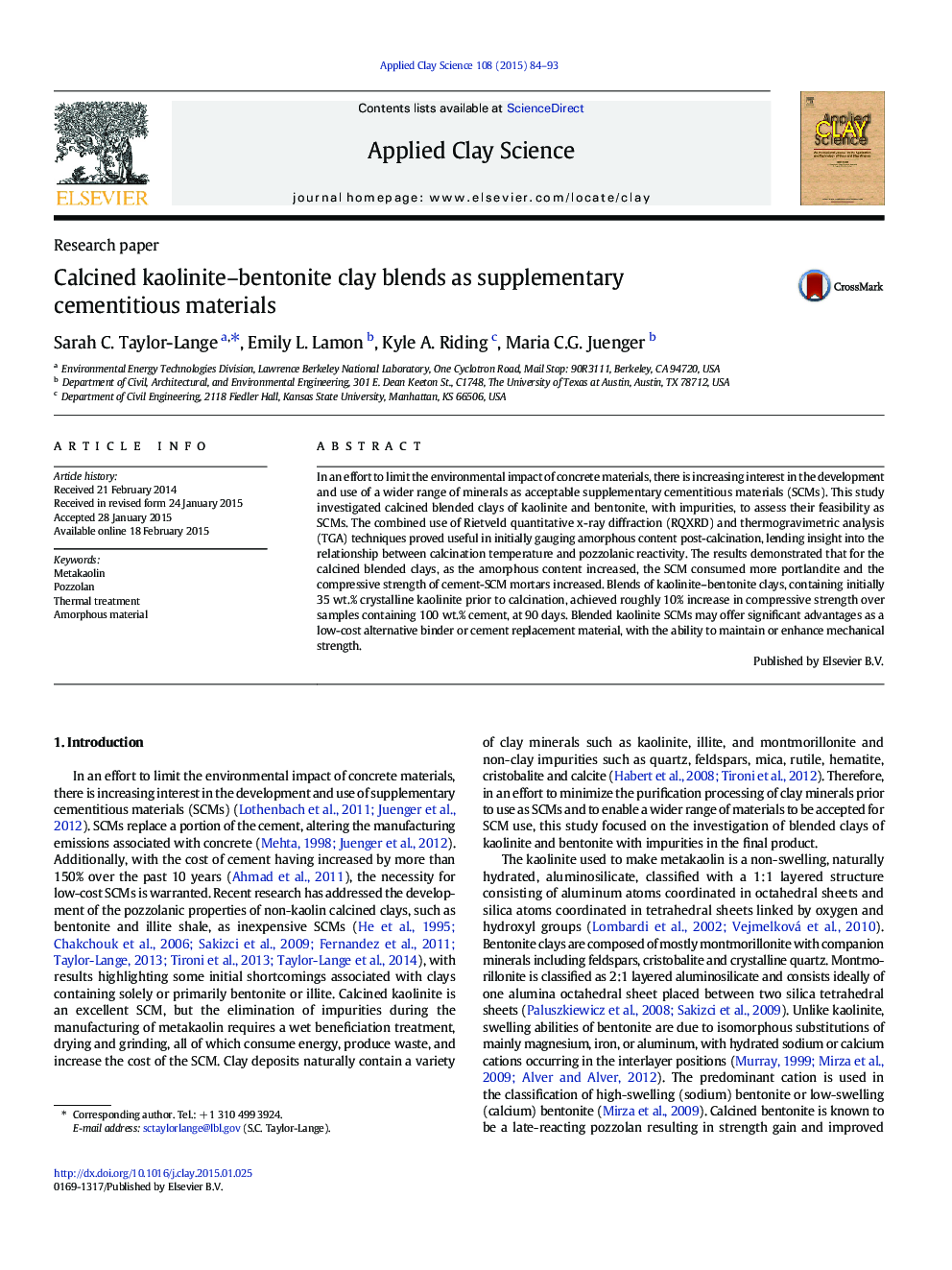| Article ID | Journal | Published Year | Pages | File Type |
|---|---|---|---|---|
| 8046502 | Applied Clay Science | 2015 | 10 Pages |
Abstract
In an effort to limit the environmental impact of concrete materials, there is increasing interest in the development and use of a wider range of minerals as acceptable supplementary cementitious materials (SCMs). This study investigated calcined blended clays of kaolinite and bentonite, with impurities, to assess their feasibility as SCMs. The combined use of Rietveld quantitative x-ray diffraction (RQXRD) and thermogravimetric analysis (TGA) techniques proved useful in initially gauging amorphous content post-calcination, lending insight into the relationship between calcination temperature and pozzolanic reactivity. The results demonstrated that for the calcined blended clays, as the amorphous content increased, the SCM consumed more portlandite and the compressive strength of cement-SCM mortars increased. Blends of kaolinite-bentonite clays, containing initially 35Â wt.% crystalline kaolinite prior to calcination, achieved roughly 10% increase in compressive strength over samples containing 100Â wt.% cement, at 90Â days. Blended kaolinite SCMs may offer significant advantages as a low-cost alternative binder or cement replacement material, with the ability to maintain or enhance mechanical strength.
Related Topics
Physical Sciences and Engineering
Earth and Planetary Sciences
Geochemistry and Petrology
Authors
Sarah C. Taylor-Lange, Emily L. Lamon, Kyle A. Riding, Maria C.G. Juenger,
